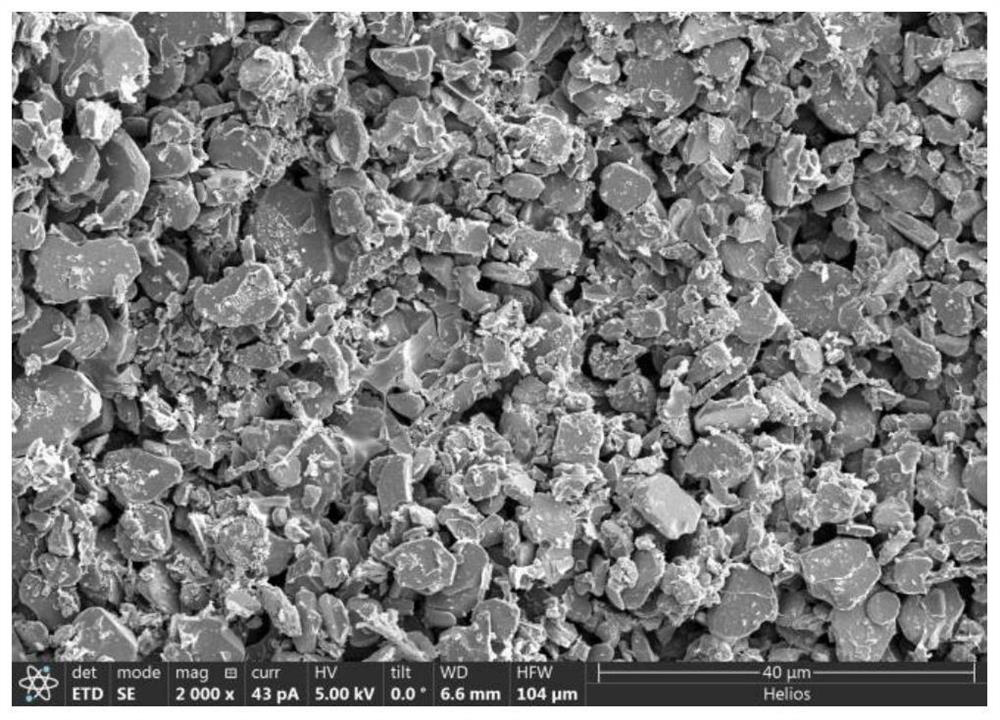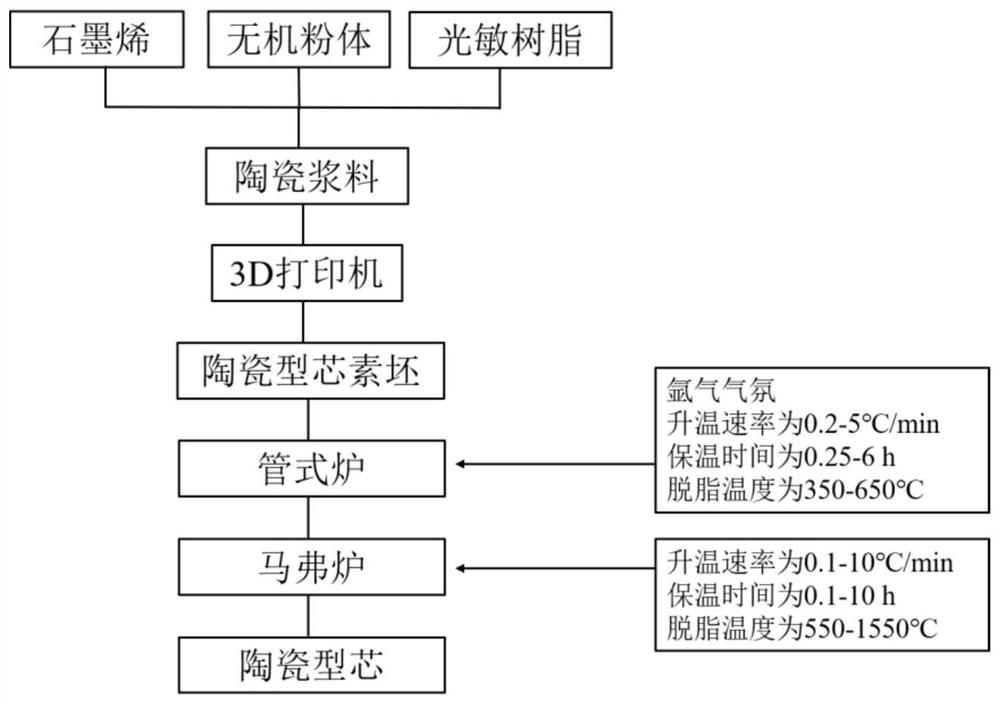Photocuring 3D printing manufacturing method of high-porosity ceramic core
A ceramic core and 3D printing technology, applied in the field of additive manufacturing, can solve the problems of cumbersome and complicated ceramic core forming process, cumbersome ceramic core forming technology, low porosity and difficult removal, etc., to reduce the difficulty of removal, The effect of shortening the cycle time and increasing the porosity
- Summary
- Abstract
- Description
- Claims
- Application Information
AI Technical Summary
Problems solved by technology
Method used
Image
Examples
Embodiment 1
[0028] 700g of inorganic powder composed of graphene (10g), alumina powder (600g) and silica powder (90g) mixed uniformly was added to 300g of photosensitive resin to obtain a ceramic slurry; then the obtained ceramic slurry was cured by light The ceramic core blank was printed by a 3D printer; the obtained ceramic core blank was placed in a tube furnace, and the temperature was raised to 500°C at a rate of 1°C / min in an argon atmosphere and kept for 2 hours; then it was transferred Put it into a muffle furnace, raise the temperature to 550°C at a rate of 1°C / min and hold for 2 hours, then raise the temperature to 1400°C at a rate of 5°C / min and hold for 2 hours to obtain a ceramic core with high porosity.
Embodiment 2
[0030] 750g of inorganic powder composed of graphene (50g), alumina powder (600g) and zirconia powder (100g) mixed uniformly was added to 250g of photosensitive resin to obtain ceramic slurry; then the obtained ceramic slurry was cured by light The ceramic core blank was obtained by a 3D printer; the obtained ceramic core blank was placed in a tube furnace, and the temperature was raised to 550 °C at a rate of 2 °C / min in an argon atmosphere and kept for 1 h; then it was transferred to In the muffle furnace, the temperature was raised to 650°C at a rate of 2°C / min and held for 1 hour, and then raised to 1450°C at a rate of 7°C / min and held for 2 hours to obtain a ceramic core with high porosity.
Embodiment 3
[0032] 80g of inorganic powder composed of graphene (10g), alumina powder (63g) and yttrium oxide powder (7g) mixed uniformly was added to 20g of photosensitive resin to obtain ceramic slurry; then the obtained ceramic slurry was cured by light The ceramic core blank was obtained by a 3D printer; the obtained ceramic core blank was placed in a tube furnace, and the temperature was raised to 600°C at a rate of 5°C / min in an argon atmosphere and kept for 3h; then it was transferred to In the muffle furnace, the temperature was raised to 600°C at a rate of 5°C / min and held for 3 hours, and then raised to 1350°C at a rate of 10°C / min and held for 3 hours to obtain a ceramic core with high porosity.
PUM
 Login to View More
Login to View More Abstract
Description
Claims
Application Information
 Login to View More
Login to View More - R&D
- Intellectual Property
- Life Sciences
- Materials
- Tech Scout
- Unparalleled Data Quality
- Higher Quality Content
- 60% Fewer Hallucinations
Browse by: Latest US Patents, China's latest patents, Technical Efficacy Thesaurus, Application Domain, Technology Topic, Popular Technical Reports.
© 2025 PatSnap. All rights reserved.Legal|Privacy policy|Modern Slavery Act Transparency Statement|Sitemap|About US| Contact US: help@patsnap.com


